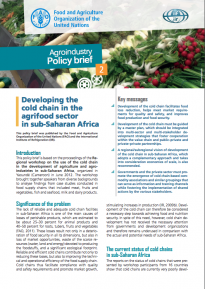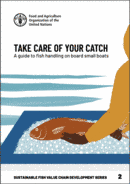Markets for Cold Storage
Freezing and frozen storage of fish can give a product shelf life of more than one year, if best practices are used and depending on the product/species. It has enabled fishing vessels to remain at sea for long periods, and allowed the stockpiling of fish during periods of good fishing and high catching rates, as well as widened the market for fish products of high quality.
If cold storage as part of an integrated cold chain is viewed as a means of reducing or preventing food loss and waste (FLW), then one of the critical driving factors for the successful evolution of cold chains is the type, location and size of market for frozen fish. According to FAO (2016), despite the challenges, economic and demographic trends in sub-Saharan Africa, including a growing middle class and increasing urbanization, offer significant opportunities for reaching more rapidly the “critical mass” needed for cold chain market development in the region.
Encouraging the proper use of cold storage for FLW reduction would also rely on consumer demand and perceptions of frozen fish and fish products. Cold storage operators and retailers therefore have a role to play in educating buyers and consumers of the benefits of frozen fish, how to store it, thaw it, and take care of products to ensure quality is maintained and FLW prevented.
Reliable and efficient cold chains contribute not only to reducing FLW, but also to improving the technical and operational efficiency of the food supply chain. Cold chains thus facilitate compliance with quality and safety requirements and promote market growth stimulating increases in production.
Key Publications
Developing the Cold Chain in the Agrifood Sector in Sub-Saharan Africa Policy brief based on the proceedings of a Regional workshop on the use of the cold chain in the development of agriculture and agro industries in sub-Saharan Africa. |
| |
Includes information on how to store frozen foods, how to keep your freezer regulated, the life-span of frozen foods, how to defrost your freezer, and the convenience and cost benefits of choosing frozen. | ||
GLOBEFISH is a trusted source of international fish trade and market news, and provides price trend analyses, market outlooks, and networking opportunities. Its reports cover over fourteen of the most major traded seafood commodities. |
More Resources
More Resources
31 October 2023














